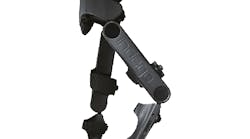"How do I remain relevant in a rapidly changing world?"
That is the question Craig Maxwell, chief technology and innovation officer at Parker Hannifin (IW 500/95), says leaders of even the world's largest and strongest companies need to be asking themselves today.
"Big companies and mature businesses like ours are struggling to reinvent themselves," he says. "In our case, we've just spent the last 100 years developing a core competence around motion and control. Our investors and our shareholders have expectations for us to deliver on those as promised."
So, as frustrated as he and innovators like him may be, they can't exactly branch out into another direction with their companies overnight, risking it all on new ideas and new markets.
That's the kind of thing better left to the startups.
This is one of the big dilemmas facing manufacturers today. Innovation has been divided into two parts: there's the disruptive element coming out of scrappy startups with nothing to lose and there's the iterative growth of big businesses with everything to gain.
We like to think that these two sides are somehow correlative, that the two parts -- one side risk-averse but with deep pockets, the other side bold and agile but short on resources -- will somehow balance each other out in the market. But the fact is, each side of the dichotomy presents an incomplete model of effective innovation and the two rarely meet until all of the risk -- and innovation -- has worn away.
At Parker, however, Maxwell and his team might have finally found a way to merge the two.
From Controls to Exoskeletons
In a half-refurbished old building in Macedonia, Ohio, engineers are putting the final touches on a revolutionary new exoskeleton suit called "Indego" that promises to give mobility to paralyzed and disabled patients across the world.
The Indego robotic system is being built by a startup straight out of Vanderbilt University with its bearded inventor, Ryan Farris, on the floor with the team, still tinkering with modifications before the device hits the European market early next year.
It has all of the energy and thrill of an early-stage startup. It is pure creativity and innovation with a team determined to change the world.
Except, this isn't happening in someone's garage. It's happening inside a Parker facility, all on Parker's dime.
Indego is the first project coming out of Parker Corporate Technology Ventures -- a hybrid program designed to bridge the gap between big business and startup culture. It's something that Maxwell and his team have been dreaming up for a decade.
"We've been watching these venture capitalists get their hooks into what's happening in academia and funding these new businesses," he explains. "We said, 'Why can't we apply that same venture capital model inside the construct of a big, secure business? Why can't that work?'"
Well, it looks like it might.
All the Potential, None of the Risk
Once complete, the Parker Corporate Technology Ventures building will house two startup operations and a dedicated tech support team, offering enough space to design, prototype and assemble products on site.
Parker's relationship with these companies will be just like that of a venture capitalist -- it will fund the projects, monitor their progress and let the innovations happen. And just like the normal investor situation, Maxwell and his team reserve the right to cut off funding the moment a project dead-ends or fizzes out.
That way, the risk is on the startup, not Parker.
But, from the perspective of those startups, the relationship is much different.
If we are successful, it is nothing less than a new way of growing."—Craig Maxwell, CTO, CIO, Parker Hannifin
"These companies are operating with the full power of a $13 billion company behind them," Maxwell says. "They have a purchasing department at their disposal, a procurement department, an accounting department and a global supply chain."
"The infrastructure is already there," he says. "The teams only have to worry about developing their projects."
The plan is impressive, but the real test of this model comes down to what value Parker can find in these new markets.
In this first stab with Indego -- which is ready to export in 2015 and (if the FDA approves it) ship into the U.S. market by 2016 -- Maxwell sees the potential for a $500 million business unit. That's a half billion-dollar boost to the company in an industry it never would have explored on its own, all for the cost of basically a few salaries and a technology license.
For all practical purposes, though, if the project adds up to anything even close to that figure, it will be a reason for big business to celebrate.
"This is all part of the grand experiment," Maxwell says. "If we are successful, it is nothing less than a new way of growing."





